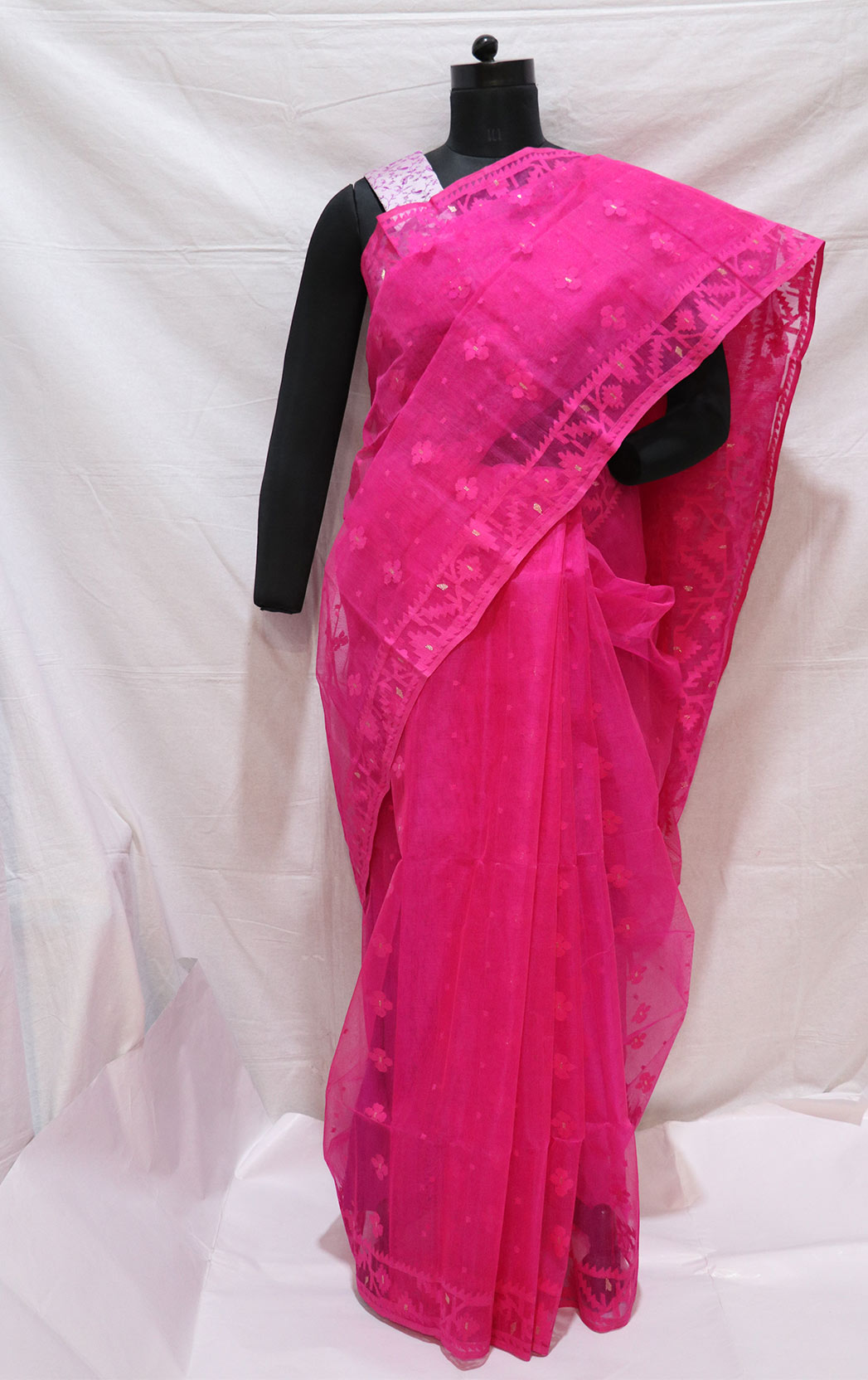Jamdani is a variety of woven fabric in cotton which is undoubtedly one of the best varieties of the
finest muslin. As the name suggests ‘Dhakai’ it has been one of the most artistic textile of the
Bangladeshi weaver.
The Dhakai Jamdani fabric is traditionally woven around Dhaka, Bangladesh, and on the brocade loom.
Jamdani sarees are as light as feather and is a blend of Mughal patronage with the ancient Hindu
traditions. Dhakai Jamdani represents one of the finest and an ancient form of weaving that actually
originated in Bengal. These Dhakai Jamdani sarees are characterized by finest fabric, intricate designs
and light weight.
The Dhakai Jamdani fabric is traditionally woven around Dhaka, Bangladesh, and on the brocade loom.
The traditional art of weaving jamdani has been declared by UNESCO as an Intangible Cultural Heritage
of Humanity. The word Jamdani is of Persian origin, deriving from ‘Jam’, meaning flower, and ‘Dani’, a
vase or a container. The earliest mention of jamdani and its development as an industry is found in
Dacca. The Jamdani weaving tradition is of Bengali origin. It is one of the most time and labor-intensive
forms of hand loom weaving.
The Dhakai Jamdani fabric is traditionally woven around Dhaka, Bangladesh, and on the brocade loom.
Dhakai Jamdani sarees are made with a supplementary weft technique of weaving. The motifs, floral or
figured, are produced by a non-structural weft in addition to the standard or the basic weft that holds
the threads together. The basic or the standard thread creates the fabric whereas the supplementary
weft creates the motif, usually with thicker threads.
Jamdani patterns are mostly of geometric, plant, and floral designs and are said to have originated
thousands of years ago. Due to the exquisite painstaking methodology required and the time it took to
produce one saree, Jamdani was only for the riches, aristocrats and royal families. As they were the only
people who could afford it.
 Shop Now...
Shop Now...
 Shop Now....
Shop Now....
 Shop Now...
Shop Now...
 Shop Now...
Shop Now...
 Shop Now...
Shop Now...
 Shop Now...
Shop Now...
